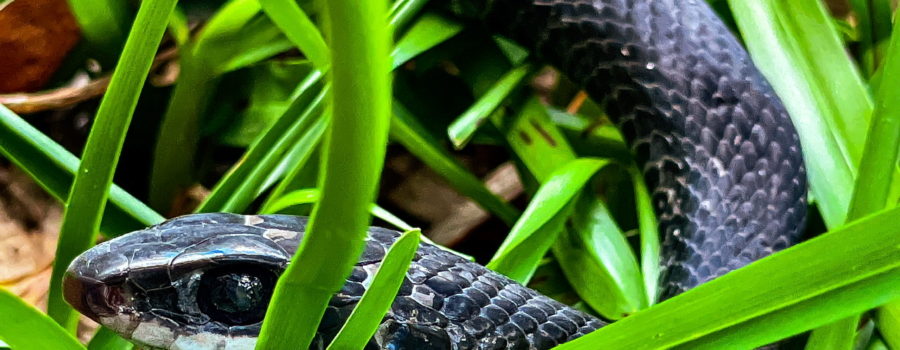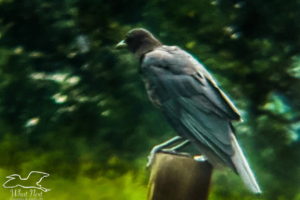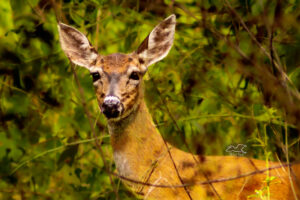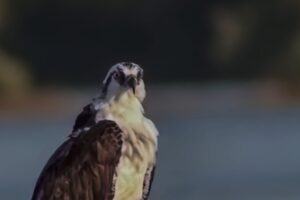Black Racers are Speedy and Beautiful Snakes

As I have been driving on my dirt road to and from my house, I occasionally see snakes in the road. The sides of the road are pretty wooded and part of what I drive through is Gothe State Forest land. Most of the snakes I see are crossing from one side to another, but sometimes, especially in the early spring, they are in the road basking. Lately I have been seeing a speedy black snake crossing the road in the forested area every few days. I’m not sure if it’s the same snake each time, but it looks similar. I’ve stopped several times to try to get photos, but it’s been gone into the woods before I can get there, but once again persistence paid off. The snake still took off for the woods, and I followed it expecting it to be long gone again, but this time I got lucky and it had stopped in the underbrush on the roadside right where it had gone in. The tip of the tail was easily visible as I approached, so I walked up very slowly and quietly and was able to get some decent images. The snake knew I was there and it moved off a short ways a couple of times, but it didn’t go too far so I was able to see and follow it.

I used to help out the people who put on a snake show years ago when I worked at the nature park, so I’m pretty comfortable with snake identification and I had suspected that this snake was a Southern black racer (Coluber constrictor priapus), and when I finally got a good look at it, I was pleased to find out that I was right. The Southern black racer (sometimes called the Southeastern black racer or Eastern black racer) is one of eleven subspecies of the Northern black racer (Coluber constrictor), which is a common snake in much of North America, southern Canada, and northeastern Central America. They live in a variety of habitats, usually near water, but not always. They are commonly found in grassy fields and marshes, on roadsides, in pastures, and in wooded areas with low, scrubby underbrush. They are also frequently seen in suburban areas and are a very common backyard snake.

Despite what the scientific name implies, black racers are not constrictors. Instead, they usually ingest their prey whole and fully alive. They will sometimes pin larger prey under a coil or two before biting them, but they do not suffocate them like constrictors do. These snakes usually prey on large insects, small rodents, lizards, toads, frogs, and even smaller snakes. They have pretty good climbing skills and will also sometimes climb trees to prey on eggs, bird chicks, and even small adult birds. As well as being good climbers, black racers are very quick (hence the name racer) and they use their speed both when hunting and when feeling threatened. Their first instinct when approached is to flee, but if they feel trapped they will shake their tails and strike at their attacker. They aren’t poisonous, but like many nonvenomous snakes they do have an anticoagulant in their saliva which will make a bite wound bleed a bit more than usual.

It totally made my day when I was finally able to photograph this beautiful snake. I spent about an hour all told following it around in the woods, but it was an hour well spent. Frequently, when I follow something into the woods, I also take shots of other things, too, but it was all I could do to keep this snake in view. I lost it several times and found it again, but eventually I did loose it completely. It was pretty hot and I had worked up a good sweat, so I was ready to go anyhow. But I’m sure this won’t be my last impromptu nature walk. They are never dull.






Recent Comments